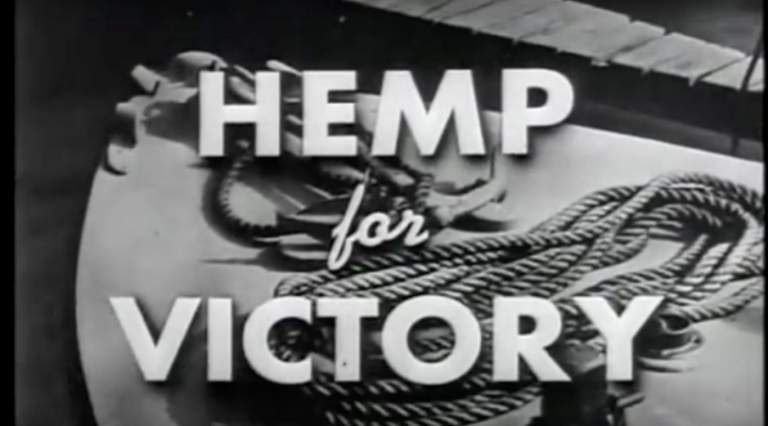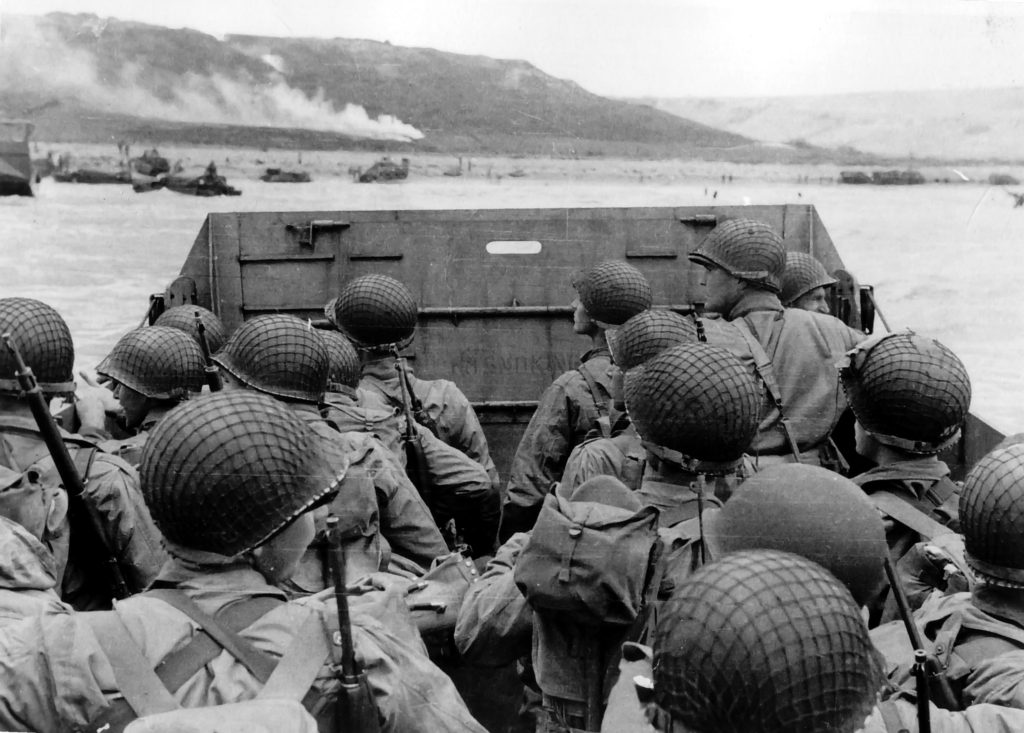Originally published at Ministry of Hemp.
During World War II, hemp was so desperately needed by the Allies that the United States briefly reversed its stance on hemp and encouraged farmers to grow it. Afterwards, they tried to erase all records of the campaign.
Millions of people are rediscovering the benefits of hemp, both as a health remedy in CBD oil and a raw ingredient in dozens of hemp-based products. Far fewer are aware of hemp’s history in the U.S. as a cash crop, or the lengths that the government went to suppress that history.
One of the most remarkable examples is “Hemp For Victory,” an educational film produced by the USDA in 1942 that encouraged farmers to grow hemp. After the war, when growing hemp again became illegal again, the government hid the existence of the film for years until pro-cannabis activists forced them to bring it back into the light.

The story of “Hemp For Victory,” and indeed the facts laid out in the film itself, make it clear that hemp was once an essential part of American (and indeed, virtually all human) life, and could be once again if laws continue to change.
Before drug prohibition, hemp was a vital American crop
Before cannabis and hemp were made illegal in the aftermath of alcohol prohibition, they were everyday parts of many people’s lives. Hemp was used to make products like cloth, rope, and sails from the moment the American colonies began. Early drafts of the Declaration of Independence were written on hemp paper, though the final version still preserved today is written on parchment.
While smokable cannabis likely reached the United States in the early days of the 20th century (the common slang term “marijuana” reflects its likely origins as an import via Mexico), cannabis tinctures were widely used in medicine for at least a century beforehand, even available in many drug stores. For a brief moment, Turkish smoking parlors were all the rage in American high society.
Of course, all that changed with the beginning of the war on drugs. As alcohol prohibition ended, much of the same law enforcement apparatus that had targeted speakeasies and booze smuggling turned against cannabis in the 1930s. Even humble hemp was demonized for the cause of drug prohibition — until, that is, the U.S. military faced a wartime shortage decades later during World War II.

War shortages force US government to declare ‘hemp for victory’
Long ago when these ancient Grecian temples were new, hemp was already old in the service of mankind. For thousands of years, even then, this plant had been grown for cordage and cloth in China and elsewhere in the East. For centuries prior to about 1850 all the ships that sailed the western seas were rigged with hempen rope and sails.
For the sailor, no less than the hangman, hemp was indispensable. …
— From “Hemp For Victory”
“Hemp For Victory” is a fascinating film, not only because of its origins and the attempted cover-up, but for its contents as well. In 13 and a half minutes, the USDA offers a concise history and truth of hemp that’s been largely censored from textbooks. Hemp was a central part of human culture and even today hundreds of thousands of acres are legally grown worldwide.
It’s also remarkable that a government agency would flip flop on a core drug policy, going from banning to encouraging hemp, just about a decade after the war on drugs began.
As the film explains, “the culture of hemp in America declined,” though the cause had as much to do with drug prohibition as with the “cheaper imported fibers” the USDA blamed. In any case, under wartime conditions, imported hemp became dangerously scarce.
“Philippine and East Indian sources of hemp [are] in the hands of the Japanese, and shipment of jute from India curtailed,” explains “Hemp For Victory.”
Efforts to encourage hemp growing were already underway:
In 1942, patriotic farmers at the government’s request planted 36,000 acres of seed hemp, an increase of several thousand percent. The goal for 1943 is 50,000 acres of seed hemp.
After the war came to a close, imported hemp became available again, and “Hemp For Victory” was buried in the government vaults.
Activists force US government to admit that ‘Hemp For Victory Exists’
Today, you can find “Hemp For Victory” in the U.S. National Archives, under record number “1682.” But sometime after the film’s release and the end of the war, it’s existence had been scrubbed from government records, including the archives. The USDA had even asked college libraries to remove the film from their holdings.
After decades in obscurity, in 1989 a number of cannabis activists, including the famous hemp expert Jack Herer, discovered or were given copies of “Hemp For Victory” on VHS. Despite the film’s obvious government origins, inquiries to government agencies, from the USDA to the Library of Congress, came up empty handed. Here’s a typical response from one government official, as quoted in “The Great Book Of Hemp“:
We contacted the Washington, DC office of the Department of Agriculture and also the Federal Audio Center and have been unable to locate any film with the title “Hemp for Victory” that was produced by any department of the federal government.
Herer attempted to find the film at the National Archives to no avail, but in May 1990, a hemp researcher named John Birrenbach received a different answer from another archivist, who successfully discovered both reels of the original film. For a fee, Birrenbach received an official government videocassette copy of the film, finally definitively proving that it was a real USDA film. The cover of the original VHS box can be seen on Birrenbach’s website, The Institute For Cannabis.

Can legalization bring new victories for hemp?
Unearthing “Hemp For Victory,” and the other strides made by pro-cannabis activists like Herer and Birrenbach, have helped modern Americans rediscover hemp’s great potential.
Today, most hemp is still imported from overseas. This can sometimes cause issues with quality and purity of CBD extracts and other hemp products. At the same time, high quality organic sources are available, and hemp is once again being grown in the U.S. thanks to progress toward legalization.
Despite continued threats from the U.S. government, over half the U.S. plus the District of Columbia have passed laws loosening restrictions on cannabis, and pilot hemp growing programs continue under regulations outlined in the 2014 Farm Bill.
Domestic hemp farmers once contributed to victory for the U.S. and its allies in World War II. Someday soon, hemp’s tremendous potential could once again represent victory for all the earth’s people.